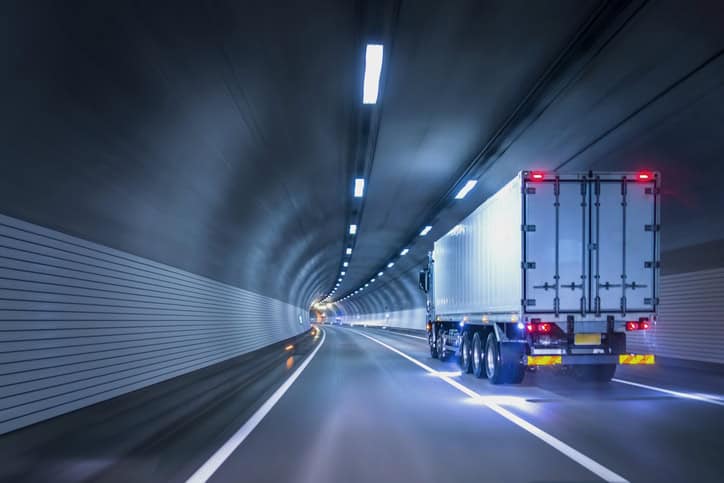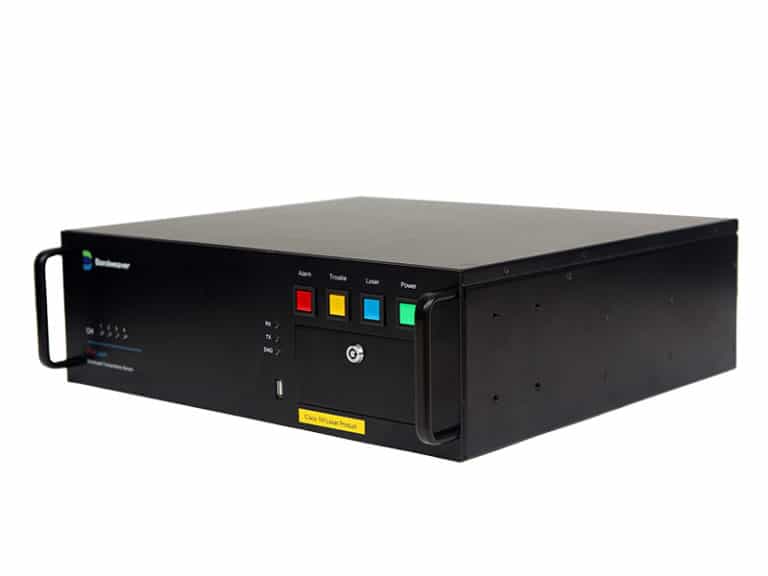Tunnels are among the most challenging environments for fire safety. Enclosed spaces, heavy traffic, complex airflow patterns, and critical evacuation procedures mean that even a small fire can escalate into a major incident within minutes. Traditional detection systems, while useful, often work in isolation: smoke detectors trigger alarms, flame cameras identify visible fire, and suppression systems deploy water or foam. The problem is that these standalone systems don’t always locate the source of the fire accurately or communicate effectively, and in environments where every second counts, that can make the difference between containment and catastrophe.
That’s why the industry is increasingly moving towards hybrid fire detection systems, integrated solutions that combine multiple technologies into a single, intelligent network. By merging the strengths of fiber optic linear heat detection (LHD), flame detection cameras, and AI-powered analytics, operators gain earlier warning, greater accuracy, and clearer situational awareness. The result is a faster, more coordinated response that saves both lives and infrastructure.
Why traditional systems are struggling
Point detectors and smoke sensors were designed for environments where air is relatively still and threats can be monitored from fixed positions. A tunnel is the exact opposite. Fans move air constantly, pushing smoke away from detectors. Curved designs break up lines of sight. Noise, dust, and temperature variations all create conditions where alarms can be either delayed or misleading.
This creates two critical problems. First, operators may not receive a warning until a fire has already spread beyond its point of origin, losing valuable seconds for evacuation and suppression. Second, when alarms are triggered too easily, operators lose confidence in the system. False activations can lead to tunnel closures, unnecessary water deployment, and a loss of public trust in safety procedures. A detection system that is too slow or too sensitive creates operational risk, which is why many operators are seeking alternatives that give them more reliable, real-time information.
Moving toward a hybrid solution
Hybrid fire detection systems address these challenges by combining different technologies, each one filling the gaps left by another. Fiber optic LHD provides continuous temperature monitoring along the full length of the tunnel. Instead of relying on sensors placed at intervals, a single fiber cable can detect abnormal rises in heat at any point, ensuring there are no blind spots.
Flame detection cameras add another layer, giving operators rapid visual confirmation of any incident. By integrating thermal imaging and analytics, these cameras can distinguish between genuine flames and harmless heat sources.
This creates a more intelligent platform that doesn’t just tell operators when a fire has already broken out but can identify precursors, such as electrical overheating, that signal risk in advance. In practice, this means fires are detected sooner, alarms are more accurate, and response strategies can be tailored to the exact location and severity of the incident.
Case in point, the Santa Lucia Tunnel
The Santa Lucia Tunnel presented a demanding brief. At 7.8 km long, one of the largest single-arch, three-lane tunnels in Europe, it required a fire detection solution that could provide complete, dependable coverage across its entire length while coping with heavy traffic, exhaust particulates and complex airflow. The owner, Autostrade per l’Italia, specified a high-performance system that would detect fires rapidly, tolerate tunnel contaminants, and integrate seamlessly with the tunnel’s automated fire-suppression logic.
To meet that brief, the project team chose a fiber-optic linear heat detection approach. The installation used Bandweaver’s FireLaser DTS paired with the FireFiber AT armoured sensing cable, installed at roof level (around 7.2 m) and fixed at regular intervals to give a continuous thermal profile with one-metre spatial resolution. Because the tunnel’s sprinkler system was already divided into many discrete zones, the detection design was mapped into 982 zones, so temperature readings and alarm logic aligned exactly with the suppression layout.
Redundancy and precision were central to the design. The scheme employed two detection cables along the tunnel roof and a multi-controller configuration that provided resilience against cable damage or controller faults. The FireLaser units are capable of EN54-22 compliant measurements every five seconds, a significant advantage over alternatives that take much longer per channel, and the FireLaser provided the accurate location data required to trigger only the specific sprinkler valve associated with the detected hotspot. The overall detection architecture was intentionally hybrid: fiber LHD provided the precise thermal location, while video flame detectors and optical beam smoke sensors formed part of the automated logic that controls suppression activation.
Commissioning and calibration were handled on site by RAET with oversight from the project engineers. The system took three weeks to commission; during installation the team encountered expected practicalities such as cable sag, which required zone recalibration. Because the FireLaser’s zones are software-configurable, RAET was able to re-reference the sensing cable to match the sprinkler zones using cold-spray reference points, and the final configuration was signed off by independent consultants. The project demonstrates how a distributed fiber solution can be engineered to meet exacting operational and integration requirements in the most challenging tunnel environments.
The outcome delivered what the operator asked for: faster, location-precise detection that is robust against dust, exhaust and moisture; continuous one-metre sampling along the tunnel; redundant architecture; and tight integration into the tunnel’s control and suppression systems. These attributes combine to reduce false activations, support targeted suppression, and provide operators with the confidence and clarity needed to act quickly when every second counts.
The future of tunnel fire safety
The Santa Lucia Tunnel is just one example of how hybrid detection is already proving its worth. As tunnels grow longer and traffic volumes increase, reliance on any single technology will no longer be sufficient. Future projects will continue to push for smarter, integrated systems that not only detect fires faster but also give operators the context they need to make the right decisions instantly.
At Bandweaver, we are helping operators move beyond traditional fire safety approaches with innovative hybrid solutions that combine fiber optic sensing, video analytics, and AI. These technologies are already transforming tunnel safety, and we’re ready to help you implement them.
If you’d like to learn more about how our solutions can support your next tunnel project, get in touch with our team today.





